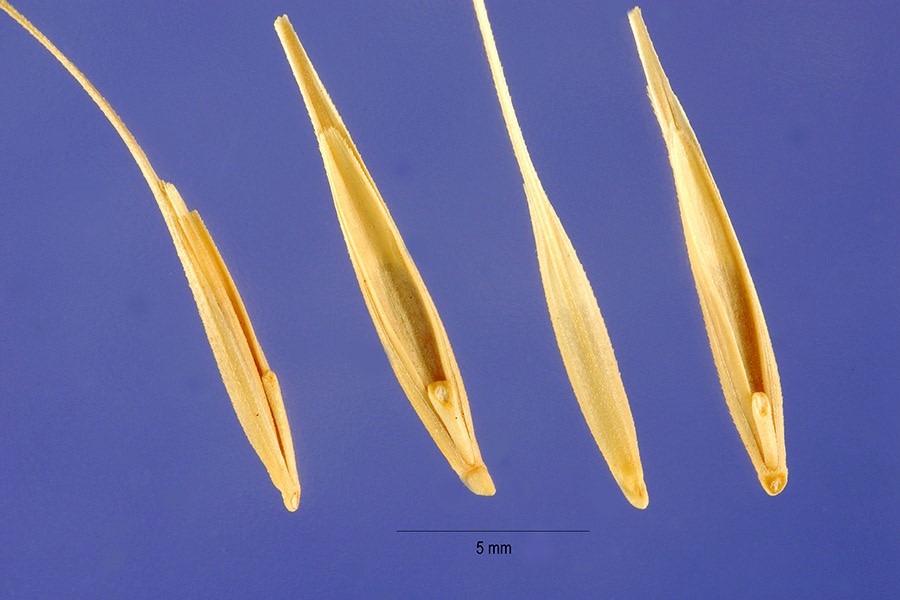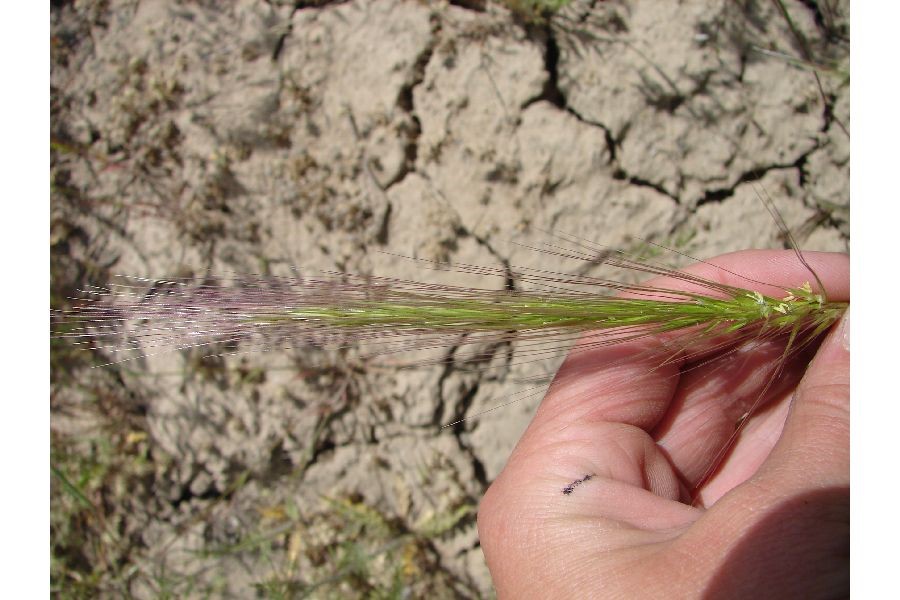Reproduction
Elymus elymoides is a type of
perennial land plant that is able to produce a large number of
seeds that are capable of germination. This is mainly due
to the fact that this species, when exposed to ideal conditions,
has a very quick germination and reaches reproductive maturity very
quickly. The germination for this species takes place
predominately in the fall or spring and flowers from late May to
August (USDA 2006). Although it quickly germinates, and is a rather
short-lived grass, E. elymoides can still thrive and even act as
a restoration plant for areas affected by almost
all invasive species.
 Elymus elymoides
has to be in certain conditions in order for it to flourish
best. It has been reported that bottlebrush squirreltail
matures best at higher elevations compared to that of lower
elevations (Simonin 2001). It also has this ability to
grow in lower temperatures. In fact, it germinates best in
a 10-25°C or 57-77°F climate zone (USDA 2006).
This species also grows in desert areas, meaning it is not
limited to only colder temperatures, but
germination is much slower in desert areas compared to colder
temperatures. This species, when exposed to increased
temperature incubation time, does not speed up the germination,
but instead usually slows it down (Meyer et. al 2000). Oddly
enough, when livestock graze and moderately crush this species,
the germination rate can actually increase when compared to a
place where there is just solely natural wind contributing to
the dispersal (Young et al. 2003). Although some traffic on E. elymoides
is very beneficial to the plant’s germination, too much can be
considered detrimental to species, especially if the plant is
anywhere from a seedling to two years of age (USDA 2006).
Elymus elymoides
has to be in certain conditions in order for it to flourish
best. It has been reported that bottlebrush squirreltail
matures best at higher elevations compared to that of lower
elevations (Simonin 2001). It also has this ability to
grow in lower temperatures. In fact, it germinates best in
a 10-25°C or 57-77°F climate zone (USDA 2006).
This species also grows in desert areas, meaning it is not
limited to only colder temperatures, but
germination is much slower in desert areas compared to colder
temperatures. This species, when exposed to increased
temperature incubation time, does not speed up the germination,
but instead usually slows it down (Meyer et. al 2000). Oddly
enough, when livestock graze and moderately crush this species,
the germination rate can actually increase when compared to a
place where there is just solely natural wind contributing to
the dispersal (Young et al. 2003). Although some traffic on E. elymoides
is very beneficial to the plant’s germination, too much can be
considered detrimental to species, especially if the plant is
anywhere from a seedling to two years of age (USDA 2006).
This species is a self-pollinating allotetraploid meaning that
it is a hybrid that has a chromosome set four times that of a
haploid organism. It is also able to hybridize with other
certain species like Elymus,
Hordeum, and Pseudoroegneria (Simonin 2001). With
some help of the wind, the seeds are distributed throughout the
area. Because of the natural wind causing the seed
dispersion of the E. elymoides, it is fully capable of long
distance distribution up to 131 feet (Simonin 2001). This
distribution is made possible through the grass’s awns, the
bristle part of the E. elymoides, and the inflorescence, which
is the complete part of the flower head on the plant that
includes parts like the actual flower itself and the stem.
The seed dispersal process happens when the inflorescence is
taken by the wind and encounters the awns of the other E.
elymoides plants (Simonin 2001).
 If
E. elymoides is not in ideal conditions, such as a
dry season, the seeds go dormant. Once the seeds are
dormant they have to go through a period of afterippening to
which the seeds germinate faster than
recently harvested seeds. It can also skip
the afterippening stage and germinate immediately giving it only a partial state
of dormancy (Simonin 2001).
If
E. elymoides is not in ideal conditions, such as a
dry season, the seeds go dormant. Once the seeds are
dormant they have to go through a period of afterippening to
which the seeds germinate faster than
recently harvested seeds. It can also skip
the afterippening stage and germinate immediately giving it only a partial state
of dormancy (Simonin 2001).
Now that the
reproduction process of Elymus elymoides has been discussed,
go back to the
Form and Function page, or
continue on to the Interactions
page
to find out how it cooperates with other organisms.
Return to Home Page